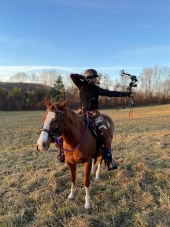
 15
15




Argue for your limitations and they are yours forever.
 7
7




 6
6




Argue for your limitations and they are yours forever.
 14
14




It's never too late to start! I retired to homestead on the slopes of Mauna Loa, an active volcano. I relate snippets of my endeavor on my blog : www.kaufarmer.blogspot.com
 7
7




Invasive plants are Earth's way of insisting we notice her medicines. Stephen Herrod Buhner
Everyone learns what works by learning what doesn't work. Stephen Herrod Buhner






 10
10




It's never too late to start! I retired to homestead on the slopes of Mauna Loa, an active volcano. I relate snippets of my endeavor on my blog : www.kaufarmer.blogspot.com
 4
4




Moderator, Treatment Free Beekeepers group on Facebook.
https://www.facebook.com/groups/treatmentfreebeekeepers/





 6
6




Argue for your limitations and they are yours forever.
 4
4




Jay Wright wrote:The simplest effective pig trap is just a long piece of strong steel mesh six or more feet high, curved into a big cirle with the ends parallel pointing towards the centre and a very narrow gap. The pigs force their way into the gap- the gap not only shows them the way in but also allows the little ones to get in. Bait it with grain- if the pigs are jittery prop the entrance open and feed them a few times- usually not necessary. Pigs are carrion eaters so add a dead critter and the smell will bring them in from a long way. Drive in steel fence posts at an angle around the perimeter and tie the mesh well- big boars are incredibly strong. Most people around here use big dogs with protective armour and kill the pigs with a knife. Some prefer shooting at night- especially now that high quality thermal gear is available- if you're rich. I've killed several hundred with rifles and more than a hundred with a bow- knapped arrowheads exclusively for the last twenty five years or so.
 6
6




Mike Barkley wrote:Anne, I don't think there are many wild ones in your area. Search for " wild pig population map" for your state to get a good idea of how many are nearby.
Invasive plants are Earth's way of insisting we notice her medicines. Stephen Herrod Buhner
Everyone learns what works by learning what doesn't work. Stephen Herrod Buhner
 2
2




Anne Miller wrote:Someone dropped an old trap off at the intersection the Ranch Road and the county road.
It is inviting ....
What would we do if we caught one? Shoot it and then try to get it out of the trap ... how?
 3
3




Argue for your limitations and they are yours forever.
 1
1








Shooting a hog in a trap
Invasive plants are Earth's way of insisting we notice her medicines. Stephen Herrod Buhner
Everyone learns what works by learning what doesn't work. Stephen Herrod Buhner






 6
6




It's never too late to start! I retired to homestead on the slopes of Mauna Loa, an active volcano. I relate snippets of my endeavor on my blog : www.kaufarmer.blogspot.com




"Observe the lilies of the field, how they grow: they do not toil or spin, but I say to you that not even Solomon in all his glory was dressed like one of these."
Matthew 6:28b-29
 2
2










 3
3




It's never too late to start! I retired to homestead on the slopes of Mauna Loa, an active volcano. I relate snippets of my endeavor on my blog : www.kaufarmer.blogspot.com

|
Murder? Well, I guess everybody has to have a hobby. Murder seems intense for a tiny ad.
heat your home with yard waste and cardboard
https://freeheat.info
|




